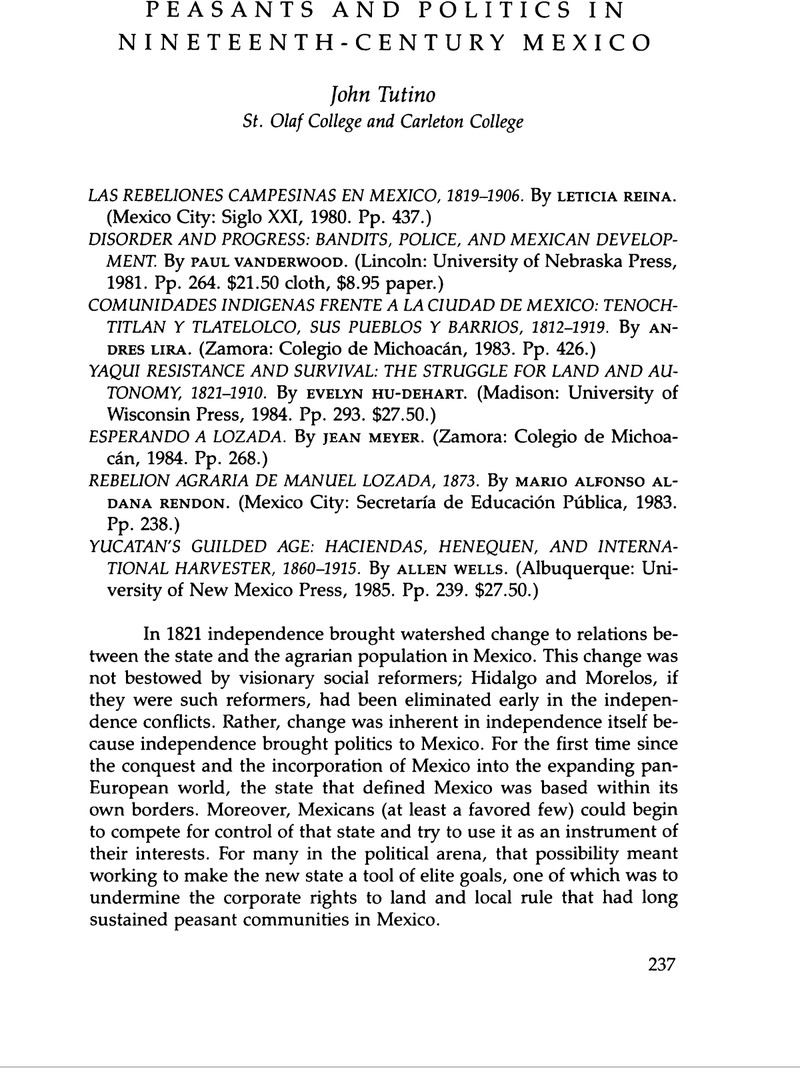Published online by Cambridge University Press: 12 October 2022

1. On state autonomy, see Nicos Poulantzas, Political Power and Social Classes, translated by Timothy O'Hagan (London: New Left, 1973); on Mexico, see Nora Hamilton, The Limits of State Autonomy (Princeton: Princeton University Press, 1982). On the mediation of the colonial state, see William Taylor, Drinking, Homicide, and Rebellion in Colonial Mexican Villages (Stanford: Stanford University Press, 1979); and Woodrow Borah, Justice by Insurance (Berkeley: University of California Press, 1983).
2. For comparison, see Mark Wasserman, Capitalists, Caciques, and Revolution (Chapel Hill: University of North Carolina Press, 1984).
3. For comparisons across Mexico, see John Tutino, From Insurrection to Revolution in Mexico (Princeton: Princeton University Press, 1986); on the importance of peasant security and insecurity in Southeast Asia, see James Scott, The Moral Economy of the Peasant (New Haven: Yale University Press, 1976).